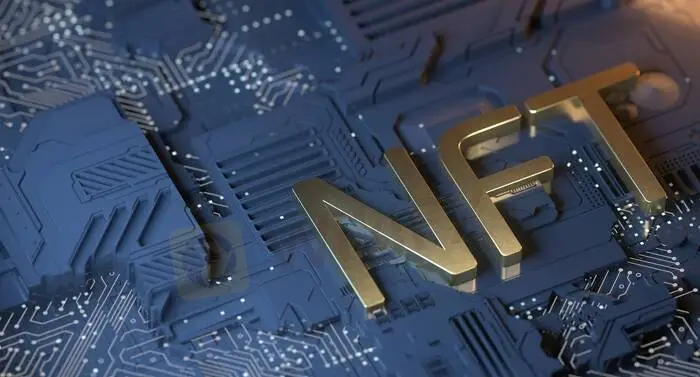简体中文
繁體中文
English
Pусский
日本語
ภาษาไทย
Tiếng Việt
Bahasa Indonesia
Español
हिन्दी
Filippiiniläinen
Français
Deutsch
Português
Türkçe
한국어
العربية
How NFTs Can Be More Than Just Tools for Artists
Abstract:Much has been said about non-fungible tokens (NFTs) and their utility for those who would like to get on the train

How NFTs Can Be More Than Just Tools for Artists
Much has been said about non-fungible tokens (NFTs) and their utility for those who would like to get on the train. Sales of NFTs alone have hit a record high this year alone, with everyone from independent artists to the biggest celebrities using them to expand their reach.
There is little to no doubt that the world has definitely evolved and is ready to move even deeper into the NFT trend. However, like every new concept that grabs attention, many people run the risk of misunderstanding some fundamental things about NFTs.
NFTs Have Benefited the Art and Content Industries
One of the biggest misconceptions about NFTs is that they are only beneficial for artists and content creators who want to protect themselves. This misconception is completely understandable since NFTs have become especially popular because of these artists. Names like Snoop Dogg, Grimes, and more have been prominent in the push for artists to jump on the NFT train and become more self-sufficient.
Even in Africa, artists are using NFTs massively. Jude “MI” Abaga, one of the biggest hip-hop artists on the continent, has partnered with Binance and is looking at the possibility of launching his next album as an NFT. everywhere you go, artists are driving the adoption of NFTs.
Then, there‘s the actual art scene. People are minting NFTs everywhere, using them to sell digital art and make money. They’re now side-stepping the conventional art industry, which involves exhibition houses and curators – all of whom take their own cut of the funds. Now, with NFTs, anyone can make money.
The same can be said for content creators. These people can build their following significantly and leverage that to sell NFTs to people. They set their own prices, and they get to enjoy all the profits that come from the sales of their tokens. If they like, they could program their NFTs so they take cuts out of any token sales that occur even after theyre done with their own purchases.
Utility NFTs: Their Rise, and Why They Look Appealing
But, NFTs are much more than this. Today, there is an interesting rise of “utility NFTs” – NFTs whose values are based on specific metrics which, to the largest extent, can be measured. Many NFT enthusiasts actually believe that these utility NFTs are the future of the industry.
Today, the NFT market is in an interesting position. Many tokens dont specifically have a market value, and this has experts scared that the rise in popularity of NFTs will eventually create a bubble that will massively pop eventually. We saw a bit of a glimpse into this eventuality when the crypto market itself went on a downturn for months. Coins dropped significantly in value, and NFT volumes actually slowed down.

Disclaimer:
The views in this article only represent the author's personal views, and do not constitute investment advice on this platform. This platform does not guarantee the accuracy, completeness and timeliness of the information in the article, and will not be liable for any loss caused by the use of or reliance on the information in the article.
Read more
JustMarkets Review 2025: Live & Demo Accounts, Withdrawal to Explore
Established in 2012, JustMarkets (Formerly JustForex) is an online forex broker based in Cyprus and serves clients in over 160 countries. Featuring a low entry barrier, a 50% deposit bonus, and robust trading platforms -MT4 and MT5, JustMarkets has gained great popularity among retail investors in recent years. JustMarkets allows traders to trade over 260 CFD-based instruments, which is not an extensive range, yet on leverage up to 3000:1 to increase trading flexibility. To enhance the trading experience, both MT4 and MT5 are provided, along with JustMarkets Trading App, MetaTrader Mobile App, and MetaTrader WebTerminal. JustMarkets offers a 50% deposit bonus to boost traders' confidence. Opening an account is a fully online process, typically completed within one day.

WikiEXPO Becomes Partner of the Liberland Government
Wiki Finance EXPO is honored to announce a partnership with the Free Republic of Liberland. This collaboration will further advance global dialogue on financial innovation and decentralized technology, bringing cutting-edge insights and industry opportunities to participants.

BOJ to Announce Policy Decision This Week, Market Bets on a Rate Hike
The yen strengthens past 156 as markets anticipate a rate hike from the Bank of Japan this week.

WikiEXPO 2025 is set to embark on a new global tour
WikiEXPO 2025 is set to embark on a new global tour First station - Hong Kong! Are you ready?
WikiFX Broker
Latest News
Forex Market Outlook: Key Currency Pairs and Trading Strategies for March 24–28, 2025
Singapore Police Crack Down on Scams: $1.9M Seized, 25 Arrested
Gold Prices Swing Near Record Highs
XTB Opens New Dubai Office
Africa Cybercrime Bust: Over 300 Arrested in Fraud Crackdown
The Growing Threat of Fake Emails and Phishing Scams
Hong Kong Banks and Authorities Collaborate to Freeze Fraudulent Accounts Faster
SocialFi and the Forex Market: A New Era for Decentralized Social Trading?
Is Billion Bucks Fx Scam?
BaFin Halts USDe Token Issuance, Citing Serious Compliance Failures
Currency Calculator







